What makes any sport truly exciting, is the controversy and intrigue intermixed with all the drama and action.
Closely fought battles and memorable victories are spoken about for days, but often it’s the contentious moments in any event and the controversies that often end up defining said events.
Over the years, F1 has been subject to its fair share of controversy and scandal. In a sport where drivers are always on the limit, new boundaries always explored and millions of dollars involved, is it any surprise then that F1 has always been full of drama?
Building on that narrative, here is a look at the top 5 scandals controversies in F1:
#5 2005 United States Grand Prix
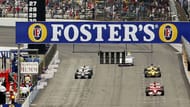
The infamous 2005 United States Grand Prix will always be remembered as one of the biggest farces in F1 News history. To understand what went down on that particular Sunday, it is important to understand the backdrop against which this race was being held.
The FIA had introduced a new rule for 2005, according to which, tires had to last the entire race distance. This had already put tire manufacturers Michelin and Bridgestone under pressure to develop tires which could last the entire race distance while being pushed to the limit.
The Indianapolis Motor Speedway, the location for the race, had also undergone a resurfacing the previous year. So when teams arrived for the race weekend, Michelin, who had not properly studied the track surface found that their tires were poorly constructed to handle the new Indy surface, especially the flat-out turn 13 which was causing their tires to fail and collapse.
When it became clear that Michelin tires would not last more than 10 laps in the race, Michelin put forth a proposition to the FIA, that a temporary chicane be constructed at turn 13, which would force drivers to take that corner slower than usual and would preserve tire integrity.
Nine of the ten teams, including two of the three teams supplied by Bridgestone, pushed for this proposal to be accepted.
However, this was where this issue devolved into a political shamble. Ferrari refused to accept the proposal, as they claimed Michelin should have been better prepared and said they deserved the advantage their Bridgestone tires provided them.
At this point Bernie Ecclestone, F1 chairman, decided to shift the entire blame on the track organizers, claiming they did a poor job with the resurfacing and advertising their changes to the surface. FIA President Max Moseley then decided to get involved, announcing that no proposal would be accepted and openly threatened all teams. Race with the chicane and no points would be awarded and he would ban all motorsports events that came under the FIA in all of North America which was a step the organizers were refusing to risk.
Ultimately no chicane was constructed. Michelin clad teams felt the risk was too great, and all 14 drivers pulled straight into the pits after the formation lap, leaving only 6 Bridgestone cars on the starting grid. Michael Schumacher and Ferrari cruised to an easy one-two, but the damage to F1’s reputation, in a market they were desperate to conquer was monumental. An issue that could have easily been resolved with a constructive dialogue and some compromise ended up embarrassing the sport in the worst possible way.
#4 ‘Water-Gate’ - 1982
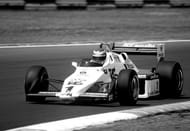
In 1982, turbo engines were yet to be adopted by all teams. Teams running the turbo engines did have a pace advantage, albeit at the cost of carrying more weight due to their increased fuel consumption.
The likes of Lotus, Williams, and Brabham feared they stood no chance against the turbo powered teams in a straight fight and so decided to play around with the minimum weight rules in an attempt to regain lost ground.
Lotus driver Colin Chapman came up with the idea of using a reserve water tank, which teams would later claim was for the sole purpose of cooling brakes, to bring the weight of the car up to the minimum weight limit during the pre-race weigh in.
They would then dump the water during the race which would make their cars lighter helping them massively, before re-filling the tanks once the race was over. The first race this tactic was employed in led to Nelson Piquet (Brabham) and Keke Rosberg (Williams) coming home in first and second. However, when their tactics were discovered, they were disqualified.
This caused a major uproar considering the fact that while the cars did not follow the spirit of the rules, they were most definitely legal. The disqualification of these two allowed French driver Alain Prost to claim the race win and rumors were floated, given the shared nationality of Prost and then FIA president, Jean-Marie Balestre.
Moreover, John Watson’s Mclaren who was moved up to second had employed the same tactics but somehow went unpunished. British teams went up in arms because of this decision, but ultimately gave in and made the switch to turbo engines at the end of the year.
#3 ‘Crashgate’ - 2008 Singapore Grand Prix
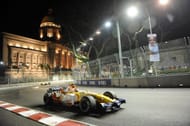
The Singapore Grand Prix is famous in F1 for being the first ever night race. The glitz and glamour of the Singapore Grand Prix is found at few other tracks, however, the first iteration of this race was marred by Renault’s crash controversy, which has now come to be known as ‘Crashgate’.
For a team that had won the championship as recently as 2006, 2008 had been a highly disappointing season for Renault. Fernando Alonso started the race in 15th place and was one of the first drivers to make a routine stop for fuel and new tires on lap 12.
He rejoined the race at the back of the grid, but on lap 17, Renault instructed their other driver, Nelson Piquet Jr., to crash his car. Piquet Jr. crashed at turn 17, a place where there were no cranes nearby, which meant the safety car had to come out while the stricken Renault was recovered. 2008 F1 regulations meant that the pit lane was closed until the safety car had picked up the entire grid, which meant that the lead the front runners had built up was wiped out when they pitted under safety car conditions.
Their pit stops allowed Alonso to take over the lead while the others rejoined behind him. Singapore being a notoriously difficult track to overtake meant that Alonso was able to hold on and take his first and only win of the season.
In 2009, when Renault dropped Piquet Jr. Following the Hungarian Grand Prix, Piquet Jr. Alleged that Renault had forced him to crash deliberately in the Singapore Grand Prix thus fixing the result and allowing Alonso to win. These allegations sparked a FIA investigation into the 2008 Singapore Grand Prix, where it was established that Renault had been guilty of fixing the race. The fallout from this race was massive.
Renault was suspended from F1 for two years, with managing director Flavio Briatore banned from all forms of motorsports for life, with chief executive of engineering Pat Symonds banned for 5 years.
The race also impacted that year’s world championship battle, as Felipe Massa who was leading the race at the time of the crash, saw his lead wiped out and ultimately finished outside the points and went on to lose the title to Lewis Hamilton by one point. Alonso was however allowed to hold on to the race win as he had no part in the entire decision.
#2‘Spy-Gate’ - 2007
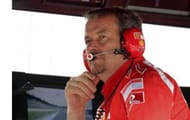
Theft, corporate espionage, and a blunder of epic proportion, 2007’s infamous Spy-Gate controversy involving Ferrari and McLaren had it all. The entire controversy came to light when Ferrari announced in June, 2007, that they had dismissed chief mechanic Nigel Stepney and also started legal proceedings against an engineer from McLaren, Mike Coughlan.
Initially, Ferrari stated that Stepney had been dismissed as a result of irregularities at the Ferrari factory before that year’s Monaco Grand Prix, but later spoke to the Italian media and said that the case against Stepney and Coughlan was with regards to the theft of technical information.
High Court proceedings were opened in Italy and FIA conducted its own investigation, with details coming out that Stepney, who had been unhappy with how Ferrari was being run ever since Ross Brawn had left, had leaked over 800 pages of technical information regarding Ferrari’s 2007 car and future plans to Mike Coughlan. Ferrari had been unaware that something of this magnitude had taken place, and were only alerted to the fact after a blunder by Mike Coughlan’s wife, Trudy Coughlan.
Trudy Coughlan had dropped off the information at a local photocopy shop in Surrey, England. The guy running the shop turned out to be a massive Ferrari fan, and when he saw the pages he had been given to photocopy were confidential and contained vital Ferrari information, he immediately contacted Ferrari, and told them about the information in his possession which led to the entire scandal being unearthed.
Ferrari ultimately reached a settlement with the Coughlans, but as a result of the investigation, McLaren were disqualified from the 2007 Constructor’s Championship, and were fined a record-breaking, $100 million.
Then McLaren drivers Hamilton and Alonso were allowed to continue competing in the driver’s championship, but it was Ferrari who won the Constructor’s championship virtually unopposed. The entire episode served as a reminder of the stakes involved in F1 and is now considered one of the biggest scandals in F1 history.
#1 Senna vs. Prost - 1989-90
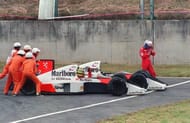
If you were to make a list of all-time great F1 rivalries, Ayrton Senna vs. Alain Prost would definitely rank right up there. These two were embroiled in a titanic battle over multiple seasons which all began in 1988 when Senna joined McLaren as Prost’s teammate.
The 1989 Japanese Grand Prix was where the rivalry between the two teammates came to a head. The two were engaged in a close title and heading into the penultimate race in Japan, Senna needed to win the race to win the title, whereas Prost would have secured the title if Senna did not finish the race.
Prost took the early lead in the race with Senna shadowing him all the way. But when Senna made a move to take the lead into the first corner on lap 46, the two collided. The collision proved to be the end of Prost’s race, however, Senna was able to rejoin the race in second place behind new leader Alessandro Nannini, with some help from the race marshals.
Senna was able to quickly pass Nannini to win the race and the title, however, Prost had already spoken to the FIA regarding the legality of Senna’s move to rejoin the race track. After long deliberations, Senna was adjudged to have rejoined illegally and was disqualified and Prost was crowned champion.
Senna was furious with the decision and felt that Prost and Balestre’s closeness had played a part in this decision to rob him and swore to take revenge. Skipping ahead to the 1990 Japanese Grand Prix and this time Senna found himself to be in the more favoured position to win the title. Senna qualified on pole, with Prost second, however, Prost was starting from the clean side of the track and held an advantage over Senna in that regard.
It was Prost who took the lead when the race began, but as Senna tried to retake the lead, they both turned into the corner simultaneously with neither backing out causing them to collide yet again, but this time it was Senna who was crowned the champion.
There were allegations that Senna had turned into Prost deliberately out of frustration due to past events, however, he dismissed it as a normal racing event, sending the event into the annals of F1 history.
